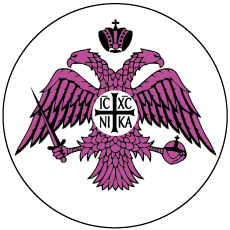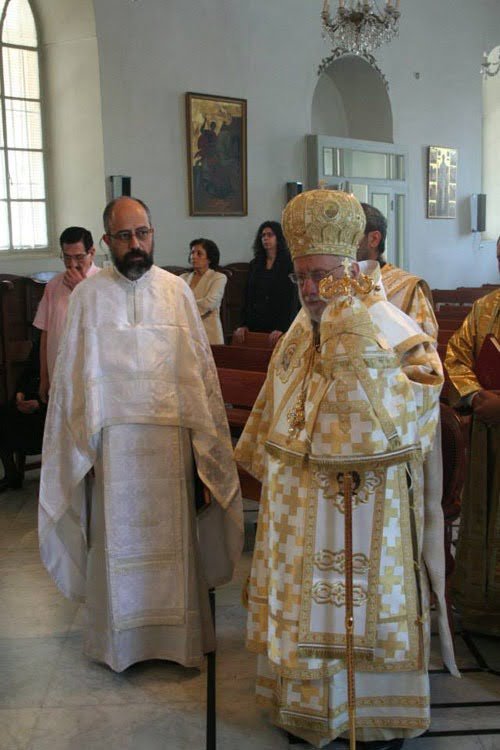Early Christians had no knowledge of all the Lord’s feast days with the exception of Pascha, “the feast of holy resurrection” which has been celebrated on Sundays and on Paschal feast day.
Birthdays practices were first introduced by pagans according to the Bible accounts, two birthdays were celebrated, one of Pharaoh the pagan (Genesis 40:20) and the other of Herod the killer of saint John Baptist (Mark 6:21). Thenceforth, the church does not honor the martyrs and the saints except on the day commemorating their martyrdom and their fallen asleep in the Lord.
Christian logic evolved and distinguished Christ from the Apostles and the martyrs, because He is the Savior and the Redeemer thus, they envisioned in every historical event in his life, a redemptive value and lights emanating from Pascha and resurrection.
![]()
The first believers who celebrated Epiphany of the Son of God on earth were the Gnostics in Alexandria as they celebrated the baptism of the Lord in the Jordan on the sixth day of January, for it was the birthday of Ion, who was the god of their city; on that day, “the waters of the Nile River begets miraculous powers”, it was also the date of the Winter solstice according to the Pharaoanic calendar.
However Gnostics perceived it as the first manifestation of Christ, because according to their belief, “Jesus was an ordinary man, who became the son of God at the moment of his baptism and his adoption by the Father and the descent and the dwelling of the Holy Spirit in the Jordan”.
The church condemned that belief and named Epiphany his birth in the flesh to affirm that the manifestation of God on earth happened at His birth and before His revelation in baptism.
Early church celebrated Christmas on the evening of January 5th and His baptism on the morning of January 6th, in order to affirm the Divine revelation was the same in essence for the newborn as for the baptized, and that baptism and descent of the Holy Spirit on Jesus did not alter either His divinity or humanity – The Armenian Church still adheres to that tradition.
Moving Charismas day to December 25th
After the convention of Nicene first council in the year 325 AD, where the church categorically condemned the Gnostic-Arian belief “that God adopted Christ instantly at His baptism”, it was imperative to exalt the divinity of Christ at His birth from the Virgin.
Meanwhile, the Romans modified the Egyptian calendar by moving the Winter solstice to the 25th of December instead of January 6th, where the Sun start its return from its farthest distance from the earth resulting in longer days, and that date was designated as a great day, worshiping “the victorious sun over darkness”, doing fireworks somewhat similar to today’s New Year’s festivities, which impressed Roman Christians, who seized the moment by deciding to separate the feast day of the Nativity from the feast day of Theophany and moving it to December 25th. That happened between the years 336 and 352.
Constantinople adopted the change in 379 AD; saint John Chrysostom was the first to call for the adoption of that change in his sermon when he was still a priest in Antioch, and it was adopted by Antioch in 386 AD; followed by Alexandria in 431 AD. It is not known when the church of Jerusalem adopted the change however, it decided at a later time not to approve the modern Julian calendar, thus celebrating the feast of the Nativity on January 7th and celebrating Epiphany on January 19th. Those changes left the Christian world with three feasts of the Nativity and two feasts of the Epiphany:
1- The Armenian Church chose not to segregate the two feasts but celebrate Nativity on January 5th and Theophany on January 6th.
2- The Roman Catholic and Roman Orthodox (Eastern Orthodox) churches adopted the new calendar, celebrating the Nativity on December 25th and theophany on January 6th.
3- The Church of Jerusalem, some of the Roman Orthodox (Eastern Orthodox) churches and the Coptic Church adopted the old calendar (the Julian calendar) celebrating the feast of the Nativity on January 7th and Epiphany on January 19th.
The 40 days Nativity lent period
The 40 days fasting period is directly connected to the preparation for holy baptism which was offered on Saturday of the Light. Due to the increase numbers of those seeking baptism, the church began baptizing also on the feast day of Epiphany; this resulted in adding the 40 days of fasting to be observed by the faithful seeking baptism also, at Epiphany. The hymn “As many as have been baptized into Christ, have put on Christ. Alleluia”, which was chanted for Christians as they joined their first liturgy on Pascha, this same hymn was also chanted for them on the feast of Theophany.
When the Nativity feast (Christmas) was separated from the feast of Epiphany, this resulted in a change to observe 40 days of fasting prior to the feast of Nativity, In addition to adding the hymn “As many as have been baptized…” to the liturgy of Nativity. This resulted in linking the 40 days fasting period to Christmas and the Epiphany was left with one single day of fasting on the fore feast day of Epiphany. (I/e Paramon)
Consequently the 40 days fasting period observed by the catechumens in preparation for their enlightenment (baptism), this practice was adopted by the church for the purpose of educating and pastoring of the faithful, these periods were offered for repentance and renewal for everyone’s baptismal vows, during the two seasons (Christmas / Epiphany and Easter).
Theology of holy Epiphany
Theology of the “feast of baptism / Theophany” is certainly more than just an attempt to demonstrate the humility of our Lord Jesus Christ or revealing his identify to John the Baptist – it is more than the testimony of John the Baptist for Christ, more than God the Father’s testimony, clearly more than the proclamation of the Holy Trinity, more than announcing the beginning of Christ ministry and more than the blessing of the waters. All the aforementioned events are important and very significant however; I am of the opinion that there is yet a more relevant, deeper and more compelling event.
In Theophany, a new act of creation has emerged similar to the act of the first creation:
At the first creation: “The earth was invisible and unfinished; and darkness was over the deep. The Spirit of God was hovering over the face of the water. Then God said “Let there be light”; and there was light” (Gen1: 1-3). We find there: Water, the Spirit of God hovering over it, God the omnipotent and his creating Word.
Now at the Jordan: The cursed ground for the sake of sin (Gen3: 17), the water biblically refers to the darkness of death by the flood, “the whole world lies under the sway of the wicked one” (1 Jn 5:19), the Spirit of God hovering above the water in the form of a dove, the creating Word of God now incarnate, standing in the water, and God the Omnipotent through his voice.
Giving the same scenario, the new creation is the womb of new birth from the blessed waters, that womb that bestows on all who accept baptism, the new creation which is Christ Himself, the new Adam. Therefore we chant “As many as have been baptized into Christ, have put on Christ. Alleluia”. Because we know that “if anyone is in Christ, he is a new creation; old things have passed away; behold, all things have become new” (2Cor5:17). And the new womb is since then the baptismal font of the Church that has been implanted into the blessed waters on Theophany day.
And therefore the first word that Jesus uttered before his evangelical ministry was: “for it is proper for us1 in this way to fulfill all righteousness2.”(Mat3:15) Thus fulfilling all righteousness is the creation of the new womb that He consecrated by Himself through His death and His resurrection; and His last word was “Go therefore and make disciples of all nations, baptizing them in the name of the Father and of the Son and of the Holy Spirit” Math. 28:19.
The church calls on each of us today to apply and fully implement the message of accord with Christ in the hymn “As many as have been baptized into Christ, have put on Christ. Alleluia” May this coming feast be a feast for renewal of our sworn allegiance to Christ in baptism, and unto Christ alone. Amen!
+The Reverend Father Mansour Azar
Translated from Arabic to English by Jack Khoury, certified interpreter
1 Us: plural; refers to the work of the Holy Trinity, same as “Let us make humankind in our image, according to our likeness (Gen 1: 26)
2 Therefore we say at the service of baptism to the baptized “thou art justified” i/e made righteous, because in our doctrine the justification and the righteousness come only from baptism.





